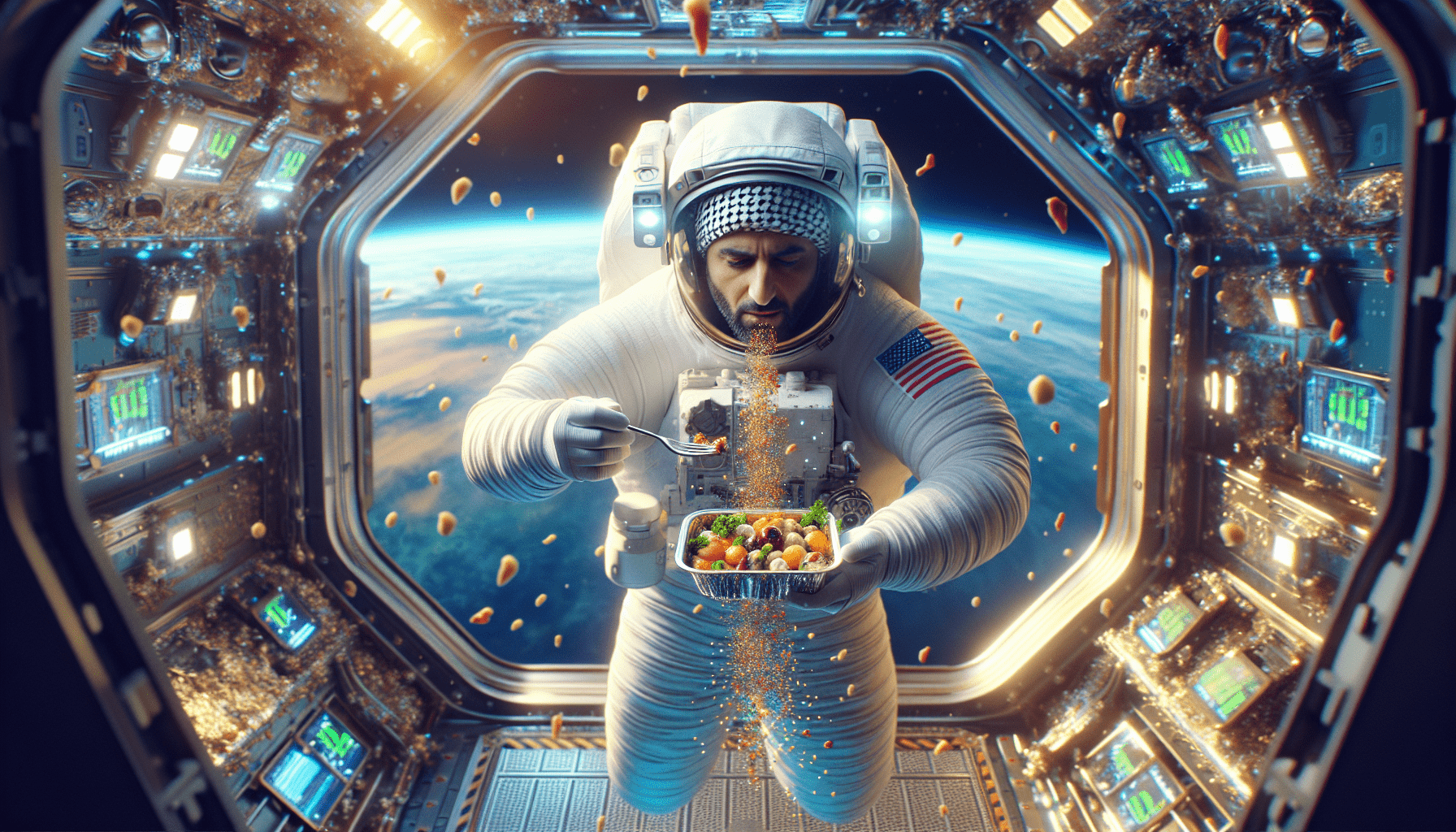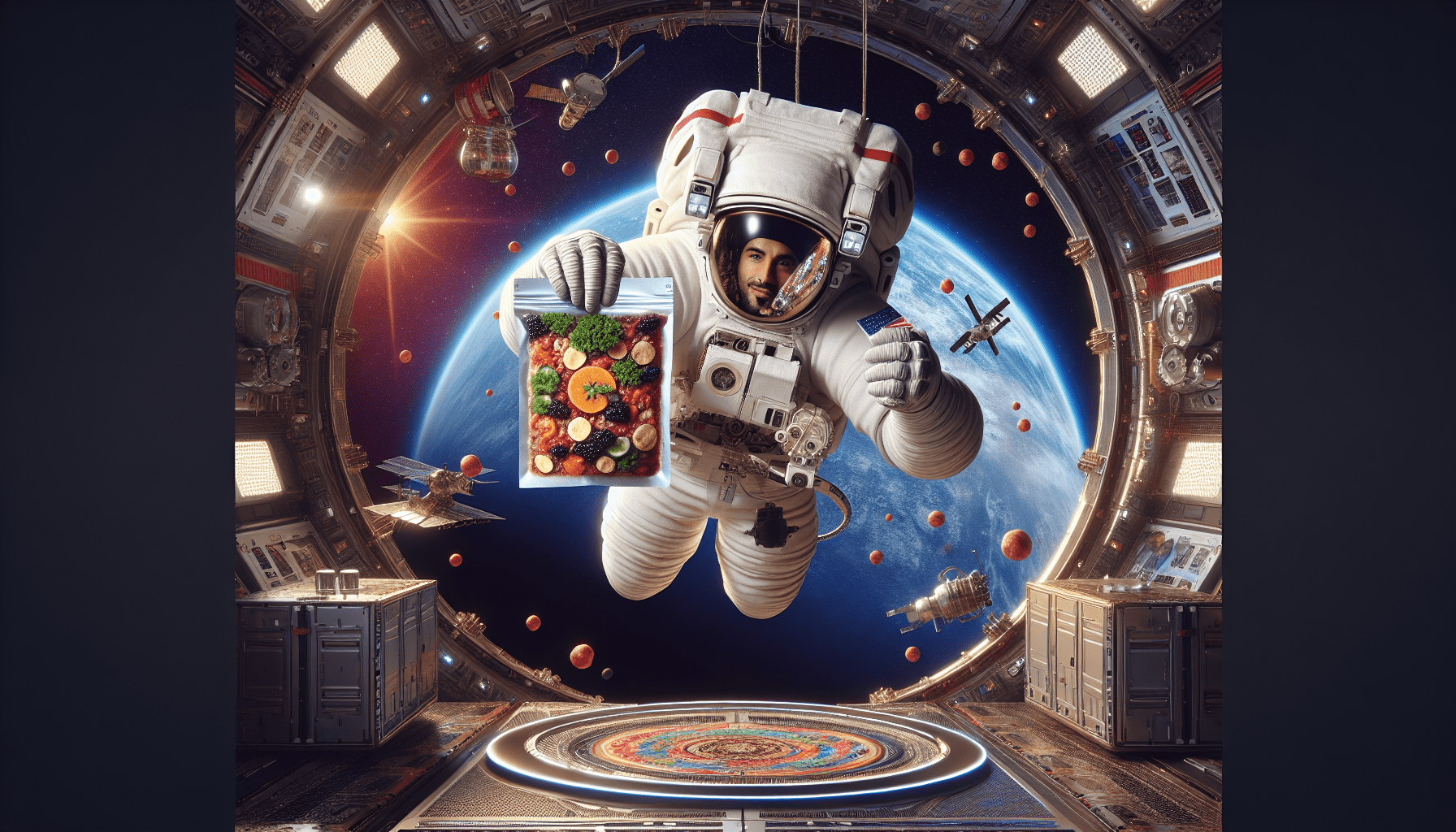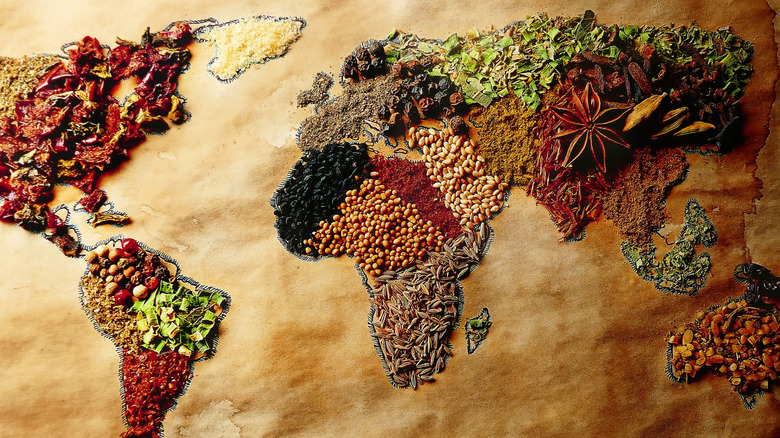Imagine floating in the vast expanse of space, surrounded by the twinkling stars, while trying to enjoy a meal. Life as an astronaut comes with its own set of challenges, one of which is eating and drinking in a zero-gravity environment. It’s fascinating to think about how everyday tasks like these become unique experiences when there’s no gravity to hold things down.
You might be curious to know what kinds of food astronauts eat, and how they manage to keep it from floating away. In space, meals often come in special pouches or tubes to prevent any mess. Despite these constraints, astronauts sometimes get to enjoy favorite dishes, such as pizza. This article will take you through the intriguing methods astronauts use to prepare and eat their meals aboard their spacecraft.
Understanding Microgravity
Definition of Microgravity
Microgravity refers to the condition in which objects appear to be weightless and experience very low levels of gravitational forces. This induced environment, often encountered in spacecraft orbiting Earth, creates the sensation of floating. You might think of it as a nearly gravity-free state, allowing astronauts to drift effortlessly through their living and working quarters. While it’s commonly referred to as zero gravity or weightlessness, microgravity is a more accurate term since a tiny amount of gravity still exists.
Impact on Everyday Activities
Microgravity significantly alters how we perceive and perform everyday activities. Imagine trying to pour a glass of water or enjoy a bite of your sandwich while floating in the air. Basic tasks require innovative solutions and adaptations to cope with the lack of gravitational pull. For instance, sleeping, personal hygiene, and even exercising must be rethought and redesigned to suit a microgravity environment. Eating and drinking become particularly challenging, requiring special equipment and techniques to manage food and liquids efficiently.
Challenges of Eating in Space
Food Floating Around
In microgravity, everything floats, including your food. If you unseal a regular food package, its contents could scatter everywhere, leading to potential hazards. Loose food particles might drift into delicate spacecraft instruments or be accidentally inhaled by astronauts, posing health risks.
Difficulty in Handling and Managing Food
Handling food becomes a tricky endeavor. You can’t simply use a fork or spoon in the traditional sense because the food won’t stay on it. Sticky foods or those that can be easily packaged tend to be more feasible. The process of cutting and managing a meal requires significant coordination and adaptation.
Need for Specialized Equipment
Given these challenges, astronauts rely on specialized utensils and equipment. From Velcro patches to keep items in place to magnetic trays that hold cutlery, every tool is designed to minimize the inconvenience of eating in a microgravity environment. Special packaging methods further ensure that food remains manageable.

Types of Food Consumed by Astronauts
Thermostabilized Meals
Thermostabilized meals undergo a heat-processing method to destroy harmful microorganisms, enabling them to last longer without refrigeration. These meals are typically packaged in cans or pouches, making them readily consumable by simply heating them up. They offer familiar tastes and textures, bringing a bit of Earthly comfort to space.
Freeze-Dried Foods
Freeze-dried foods are another staple in an astronaut’s diet. The moisture is removed from these foods through a freeze-drying process, making them lightweight and preserving their nutritional value. To consume, astronauts add water back into the food using a specialized hydration system.
Fresh Foods
Although not as common, fresh foods are occasionally available. These items, such as fruits or vegetables, are often included in supply missions and provide a valuable source of vitamins and nutrients. However, their limited shelf life and the logistical challenges of transport mean they’re more of a luxury than a staple.
Snacks and Treats
Just like on Earth, snacks and treats are an important part of an astronaut’s diet, both for nutrition and morale. Items like nuts, granola bars, and even cookies are packed carefully for consumption. Special occasions might also come with unique treats, reminding astronauts of home and boosting their spirits.
Food Packaging and Storage
NASA’s Food Packaging Methods
NASA has developed sophisticated packaging methods to ensure that food remains safe and easy to consume in space. Packaging must be airtight to prevent contamination and designed to be opened easily by astronauts wearing gloves. The materials must also be lightweight but durable enough to withstand transport conditions.
Importance of Long Shelf Life
The long shelf life of space food is crucial. Missions often last for months, and resupply opportunities are limited. Therefore, food must remain nutritious and palatable without spoiling, which is achieved through methods like freeze-drying and thermostabilization.
Preventing Contamination
Contamination in space can have severe consequences. Specialized packaging and handling processes are implemented rigorously to prevent any microbial contamination. This includes sterilizing the food and its packaging before it leaves Earth.

How Astronauts Prepare Food
Hydration Process for Freeze-Dried Foods
To prepare freeze-dried foods, astronauts use a hydration system that reintroduces water into the food, restoring it to its original form. This process involves a careful balance to ensure the food is neither too dry nor too soggy.
Heating Precooked Meals
Precooked meals are usually heated in special ovens or heaters designed for space use. These devices safely warm the meals without posing any fire hazards, making it possible for astronauts to enjoy a warm meal despite being miles above Earth.
Using Special Ovens and Heaters
Special ovens and heaters designed for microgravity environments use conduction and other safe heating methods. These appliances are compact and energy-efficient, ensuring that they can function reliably within the constraints of spacecraft utilities.
Eating Techniques in Space
Velcro and Magnetic Utensils
Velcro and magnetic utensils are a game-changer. They help keep cutlery and food packages anchored, preventing them from floating away mid-meal. The use of these specialized tools simplifies the otherwise complicated process of dining in microgravity.
Avoiding Spills and Crumbs
Spills and crumbs are not just messy in space; they can be hazardous. Crumbs can clog instruments or become a general nuisance. Therefore, astronauts use foods that hold together well and techniques like squeezing food from pouches directly into their mouths to avoid such issues.
Using Squeeze Tubes and Pouches
Squeeze tubes and pouches are popular choices for consuming liquids and semi-liquids. They ensure that the food goes directly from the container into an astronaut’s mouth, minimizing the risk of spills and simplifying the cleanup process.
Drinking in Space
Using Straw-Suction Technology
Drinking in space often involves straw-suction technology. Special straws ensure that liquids don’t float away, allowing astronauts to drink from sealed containers. These straws have one-way valves to retain liquid flow control.
Special Drink Bags
Special drink bags equipped with built-in straws help astronauts consume their beverages without spilling. These are designed to be squeezed, helping force the liquid out when needed.
Challenges with Liquids
Handling liquids in a zero-gravity environment is challenging. Without gravity to pull them down, liquids form globules that float freely, making spills almost inevitable without proper equipment. Specialized containers minimize the risk and allow astronauts to stay hydrated efficiently.
Nutritional Requirements for Astronauts
Balanced Diet in Microgravity
A balanced diet in microgravity is essential for maintaining health and performance. Astronauts need the right mix of carbohydrates, proteins, fats, vitamins, and minerals to stay healthy. NASA’s dietitians meticulously plan their meals to ensure all nutritional needs are met.
Supplements and Vitamins
To compensate for the lack of fresh food and potential deficiencies, astronauts often take supplements and vitamins. These ensure they receive all the necessary nutrients that might not be adequately available through packaged and processed foods.
Caloric Intake and Energy Needs
In space, caloric intake and energy needs are different due to microgravity. Astronauts must consume enough calories to maintain muscle mass and energy levels, which can be challenging when physical activity levels differ due to the lack of gravity.
The Psychological Aspect of Eating in Space
Comfort Foods and Morale
Comfort foods play a big role in maintaining morale on long missions. They provide a sense of familiarity and normality, making astronauts feel more connected to life on Earth. This emotional connection can be crucial in high-stress, isolated environments.
Cultural and Familiar Foods
Including cultural and familiar foods helps astronauts feel closer to home and can boost their spirits. Sharing meals that remind them of family traditions or national cuisines can provide comfort and a sense of unity among international crew members.
Impact on Mental Health
The psychological impact of diet in space is significant. A varied and enjoyable diet can reduce stress and improve mental health, whereas a monotonous or unappetizing diet can lead to dissatisfaction and mood swings. Understanding and addressing these factors is crucial for prolonged missions.
Conclusion
Summary of Methods and Techniques
Eating and drinking in space require innovative methods and techniques due to the unique challenges posed by microgravity. From specialized packaging and tools to the careful preparation and consumption of food, every detail is meticulously planned to ensure safety and efficiency.
Importance of Proper Nutrition
Proper nutrition is vital for the health, performance, and morale of astronauts. Balanced diets are planned to meet all nutritional needs, ensuring astronauts remain healthy and energized throughout their missions.
Looking Ahead to Future Improvements
As space exploration advances, the methods and technologies for eating and drinking in space will continue to evolve. Future improvements may include more varied and higher quality food options, better packaging, and expanding the ability to grow fresh food in space, further enhancing the dining experience for astronauts on extended missions.






